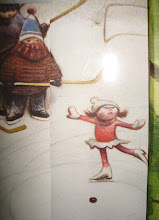
What is the angle, aim and purpose of comedy in the style of cheeky humor, slapstick in nature, relating to sexual deviation, disguised identities and the ironic weaving of romance between persons taking part in all of this? Billy Wilder’s film Some Like It Hot (1959) involves all of these elements and through the spectacles of Sigmund Freud’s Jokes and their Relation to the Unconscious we may bend toward an idea about the message that the film is sending. More specifically these messages, though subliminal, make a statement to the individual unconscious’ of the audience through the comedy in this film.
The year is 1929 during Prohibition and two struggling jazz musicians Joe and Jerry witness a mobster’s hit on rival gangsters, are seen, and in need of an impeccable get away, cover and jobs, they fill the only open positions of two other jazz musicians traveling to Florida, in an ALL ladies band that is. The two disguise themselves as “Josephine” and “Daphne” and hop on the train in disguise only to be splendidly surprised to meet Marilyn Monroe, aka Sugar in the band with them. In the midst of this charade, Joe and Jerry find themselves having an insurmountable amount of fun with as many women as they could possibly imagine, though “ladies” they are. As a pair of the homeliest female musicians, the sexual deviation begins to blossom, and not only because their gender’s are camouflaged. After meeting “Sugar” “Joesphine” can’t help but fall for her, and vice versa, to a comedic twist. Further, looking directly at what the plot is unfolding , a woman is falling for a man in disguise of a woman, and this happens to “Daphne” (Jerry) as well because a wealthy suitor wants to wed him. Thus, Sugar develops feelings for a man, but whom she believes is a woman.
The design of this film’s jokes and humor surrounding the two questionable “ladies” comments and interactions with their fellow female band mates is for the purpose of revealing a “Suppose this really does occur,” and in the vocabulary of Sugar “and their ain’t no disguises?” moment within the unconscious’s of the audience. Therefore specifically, what is the Freud-induced “definite purpose” of the jokes that are supremely “tendentious?”(Freud 107)?
Jerry’s comment after first laying eyes on Sugar: “Look how she moves! Just like Jell-O on stilts. Must have some sort of built-in motor…” portrays him as slightly fascinated and mildly envious that now, in his disguise, can’t attain her. Expressing her voluptuous form akin to a humble food makes the comedy more accessible while still infiltrating the audience’s collectives mind. For instance, Freud explains that “It is a further relevant fact that smut is directed to a particular person, by whom one is sexually excited and who, on hearing it, is expected to become aware of the speaker’s excitement…” (Freud 115). His excitement is arises while in disguise, and can therefore is a surging of his suppressed desires. Sugar’s eventual love and attraction for “Josephine” is an act of sexual deviation and seeps into the minds of the audience as acceptable and perhaps has the aim, as it is “tendentious,” to question the higher rate of homophobic racism of the time.
Additionally, the gender swap and the verbal humor such as comparing staying the night in an abundantly varying pastry shop with their situation (traveling with and spending the night on an all-girl bus) are most importantly dealing with suppressed feelings of desire, envy and frustration, as the disguises cause some complication. The on-going parody of “Josephine” and “Daphne” raises the question: Would men sometimes desire to be women for a time, perhaps to get closer to other women? Would they in actuality enjoy such a masquerade? Joe realizes the sexual advantage to his unfortunate situation, though restricting it may be, because in the form of another, he wins Sugar though the ending is like any classic film and his true male identity is revealed. Their disguises could be interpreted to portray a man’s sexual frustration and desire, and how his only arrival at obtaining the women, is through a female means, rather that be acting like a woman or treating her completely different than a man would. The almost misogynistic yet fascinated comments about women’s physical forms could further be interpreted to amount to a man’s frustration and desire. Freud details the exodus of desires that rise in the mind that can be applicable in understanding the film’s humor: “To the human psyche, all renunciation is exceedingly difficult, and so we find that tendentious jokes provide a means of undoing the renunciation and retrieving what was lost (Freud 121). This affirms that the “forbidden” and twisted amour of Sugar and “Josephine” and the relatively crude descriptions of women cater to the ideas and questions traipsing around the minds of the audience of this Hollywood classic.
Works Cited:
Freud, Sigmund. Jokes and Their Relation to the Unconscious. The Standard Edition. New York: W.W. Norton and Company. 1960.
Wilder, Billy. _Some Like It Hot_. Metro Goldwyn Mayer, 1959.





